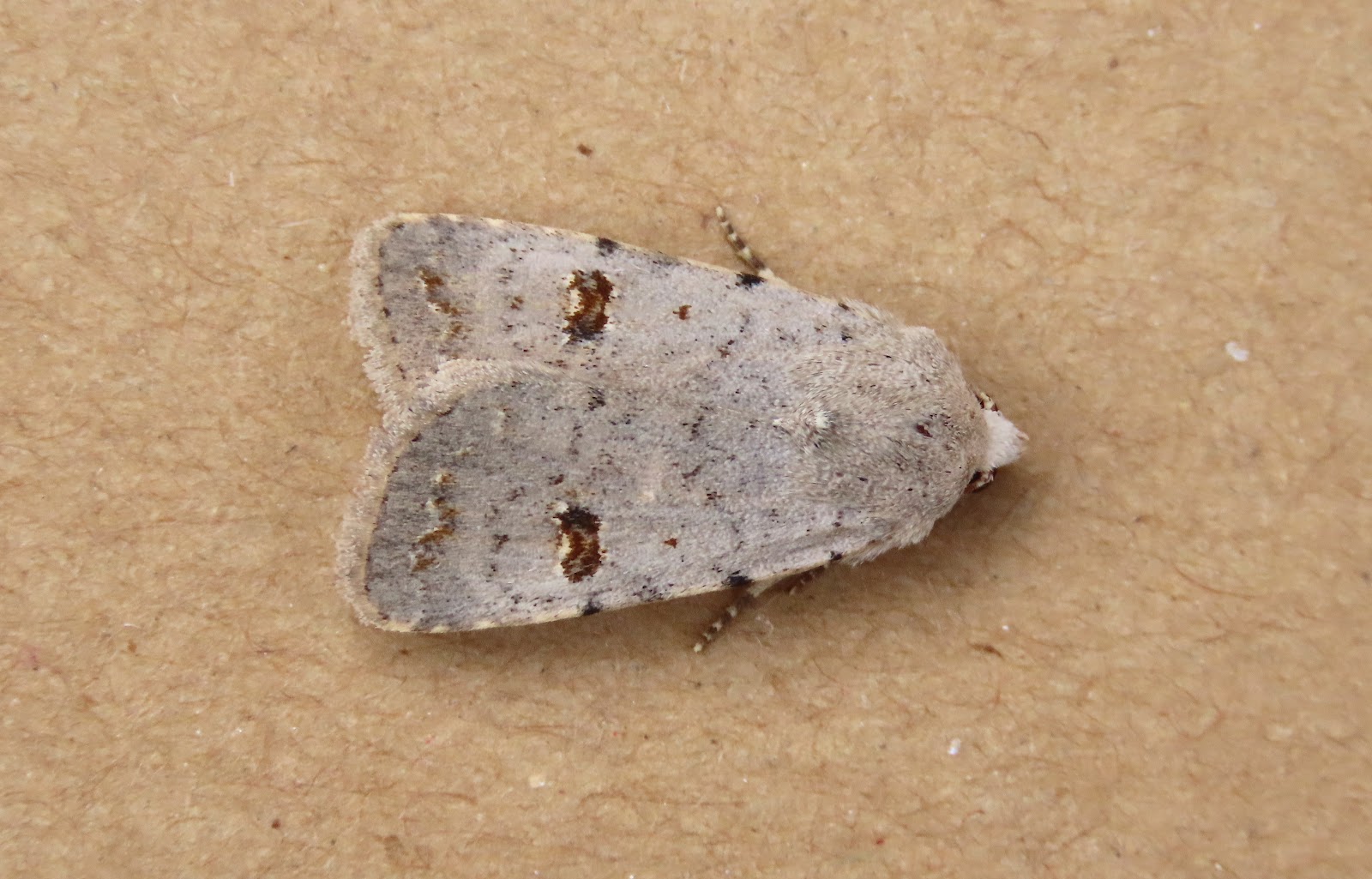Our ever-changing moths
This morning saw the capture of a Clancy's Rustic (above) at the MV - the first to be recorded here in Banstead and my 652nd species (of which 413 are macros) for the garden. This species was unknown in the UK until my friend Sean Clancy caught and identified one in New Romney, Kent in 2002. As much as it is a moth that has only been reliably recorded in the country for 21 years, it is no longer a rare migrant but has now become a colonising resident. It's appearance in Banstead was not unexpected, in fact was overdue, having colonised southern coastal counties and is now making inroads into Surrey and the London area.
Our moth fauna is in a state of flux - of course, no group of creatures stays still, but the range of many moths have exhibited great changes in recent years, particularly migrants colonising the south-east of England. Others, pure residents, have suddenly increased in numbers so that they now appear in areas that they shunned not that long ago. I thought it might be of interest to look at those species that were new for my garden trap over the past 15 years to see which could be ascribed to the above two groups and what their current Banstead status is.
2008 Buff Footman (now a resident, annually recorded in good numbers)
2009 Dingy Footman (now a resident, annually recorded in good numbers)
2010 Toadflax Brocade (colonised from south coast, annual in small numbers, breeds in garden); Orange Footman (now a resident, annually recorded in modest numbers); Hoary Footman (now a resident, annually recorded in good numbers). As can be seen, the 'footmen' - all lichen and algae feeders - are doing well!
2011 Rannoch Looper (still just a rare continental visitor); Tree-lichen Beauty (another rapidly expanding species from the south coastal counties, multiple records per year)
2012 Jersey Tiger (big coloniser, from south-western coastal counties plus possible London releases, now ubiquitous both day and night); Gypsy Moth (London releases and possible migrants have created a resident population that is now annually caught in modest numbers)
2013 Royal Mantle (still just the one recorded); White-point (another big coloniser, multiples at the MV most nights in their flight season)
2014 Grass Rivulet (not annual); Dark Spectacle (annual in modestly increasing numbers)
2015 Cypress Carpet (south-coast coloniser, modest numbers annually)
2017 Yellow-legged Clearwing (once, lure only); Orange-tailed Clearwing (once, lure only); Scarlet Tiger (a rare wanderer); Scallop Shell (still just one record); Clifden Nonpareil (still just one record); Delicate (rare migrant, three records)
2018 Great Oak Beauty (one record); Kent Black Arches (still rare); Mocha (one record); Oak Processionary (now established from adventive stock, annual in modest number); Gold Spot (one record)
2019 Langmaid's Yellow Underwing (two recorded (and verified) but critical examination not carried out to increase records. No doubt from colonising south coastal population)
2020 Dewick's Plusia (pictured below, colonist from southern coastal and London populations, recorded annually in small numbers); Heath Rustic (one record, heathland wanderer); L-album Wainscot (another coloniser from the south, feet firmly under the table in a short time, up to six a night at the moment)
2021 Brown-veined Wainscot (just one record)
2023 Red-necked Footman (just one record); Dark Crimson Underwing (two recorded, to be expected given the presence of a recently established population to the immediate north-west of me); Clancy's Rustic (was expected, south coastal expansion, local records increasing)
These are exciting and fascinating times to be recording moths. We shouldn't gloss over the fact that many species are going the opposite way, with falls in numbers and distribution. All we can do is keep trapping, continue to take notes and collate the findings.




Comments